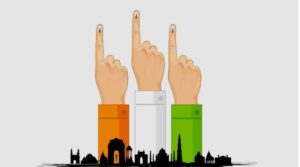Because the past couple of years, it has been seen that political choices occur each from time to time in sure provinces of India. So the State {Hardware} and Political Race Fee of India connects with its belongings and labor provide to direct gathering choices in these states. Presently, the NDA authorities is remembering to go for coaching for “one Nation, one political race.” We must always peruse this text and change into acquainted with the advantages and faults of the one Nation, one Election.
India is named the largest majority-ruling nation on the planet since China is a socialist nation, however being the being essentially the most crowded nation. The general choices for the Lok Sabha and state gatherings are held each 5 years. In any case, it’s seen that political choices are an entire-year course of in India.
The federal government spends a substantial amount of money and important funding on the lead of assorted races. That’s the reason why the administration of India is considering the “One Nation, One Political Race” framework in India.
What’s the “One Nation, One Political Resolution” Framework?
The federal government holds basic elections for the Lok Sabha and State Assemblies each 5 years in India. Nonetheless, conducting separate elections for various state assemblies in sure states places immense stress on the federal government exchequer. Presently, the NDA authorities must make just one political choice in the complete nation within the subsequent 5 years.
Historical past of “One Nation, One Political Resolution” in India
On the off likelihood that you simply really feel that the thought of “one nation, one political choice” is new for India, then you might be off-base since “one nation, one political race” is definitely not a exceptional trial in our nation. Synchronous choices have been led for the Lok Sabha and the state gatherings all of the whereas in India in 1952, 1957, 1962, and 1967.

This apply was suspended in 1968–69 when a regulatory meeting was dissolved resulting from varied causes. Since then, India has been trying to reintroduce the previous electoral system, however there is no such thing as a consensus amongst political events..
How about we study the advantages and faults of “One Nation, One Election”?
Advantages of “One Nation, One Political Resolution”
1. Cash Saving
The best rationale for the blessing of the synchronous political race is the setting apart of presidency Cash. Assuming that the nation goes for “one Nation, one election,” it can put aside monumental cash. There are 4120 MLAs within the 31 states and UTs. The best consumption restrict for higher gatherings is 28 lacs. It implies that within the occasion that each one of many states and UTs goes for a one-time political race, its absolute expense could be Rs. 11 billion. As a rule, round 5 states go for surveys constantly.
2. Fast Development Work
It’s seen that when the political choice mannequin set of ideas is in power, the initiation of latest actions would not occur. So as soon as political race will assure development in preparations and initiatives of the focal and state legislatures,.
3. Thoughts Darkish Money
It’s a loosely held bit of knowledge that choices are battled with darkish money. An amazing quantity of darkness reworked into white money throughout choices within the nation. So within the occasion that the selections are remodeled time, it’s believable that an equal financial system will fill the nation.
4. Easy working of public authority {hardware}
The involved authorities sends immense labor provides and equipment to direct free and honest races within the nation and states. Colleges and universities open on time; educators and different authorities are allowed to work of their respective departments, which reinforces the well-being of the overall inhabitants.
5. Effectivity of Administration
If elections usually are not held yearly, the federal government avoids the necessity to entice the overall inhabitants with incentive schemes and the creation of packages based mostly on caste and faith. Certainly, even state and federal governments needn’t plan rewarding monetary plans constantly, and so they could make troublesome decisions to enhance the financial system.
Adverse marks of “one nation, one political race”
1. Native points will fade into insignificance: It’s noticed that elections for state assemblies and the Lok Sabha are fought on totally different agendas. Provincial gatherings goal close by points, whereas public gatherings goal public points. So it’s believable that provincial gatherings can’t empathize with the close by points.
2. Tough Likelihood for Provincial Gatherings: Native gatherings can’t cope with public gatherings regarding political race use and political race process. Celebration choices are intently linked to native considerations and constituents. Consequently, regional events could not endorse one-time political elections.
3. Postponement in Political Race Outcomes: At current, virtually each one of many territorial gatherings is requesting direct choices by expressive dance papers. Within the occasion that choices are made in one-time mode, the race outcomes might be introduced extraordinarily late.
4. Sacred Points: The political race seems to be remarkably troublesome as a result of majority rule arrange within the nation. If elections happen concurrently, it is unsure if each the central authorities and all states may have majority formation. Moreover, coalition governments could kind, probably resulting in early dissolution and nationwide re-elections.
5. Given India’s standing because the world’s largest democracy, organizing simultaneous elections throughout states, UTs, and Lok Sabha is daunting.
In response to the Legislation Fee, if the nation opts for simultaneous elections, the election fee should spend Rs 4,500 crore on new EVMs.
